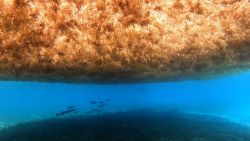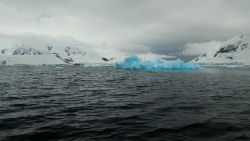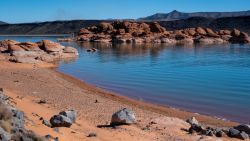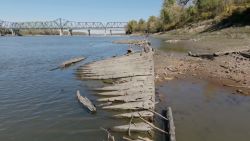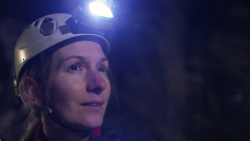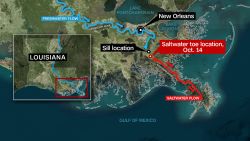The Arctic is experiencing a multi-year stretch of unparalleled warmth “that is unlike any period on record,” according to the 2018 Arctic Report Card, a peer-reviewed report released Tuesday morning from the National Oceanic and Atmospheric Administration, an agency within the United States Department of Commerce.
The report states that human-caused climate change is transforming the Arctic, both physically through the reduction of sea ice, and biologically through reductions in wildlife populations and introduction of marine toxins and algae.
The report is yet another study from part of the US government indicating that climate change is real and having a profound impact, despite denials from the President and senior members of his Administration.
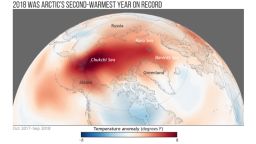
Temperatures in the Arctic are warming more than twice as fast as the overall planet’s average temperature, with temperatures this year in the highest latitudes (above 60 degrees north) coming in 1.7 degrees Celsius (3.1 degrees Fahrenheit) above the 1981-2010 average. These were the second warmest (behind 2016) air temperatures ever recorded during the Arctic year, which runs from October through September to avoid splitting the winter season.
The five years since 2014 have been warmer than any other years in the historical record, which goes back to 1900. Although Arctic temperatures have been subject to wild swings back and forth through the decades due to natural variability, they have been consistently warmer than average since 2000 and at or near record since 2014, the report states.
“The changes we are witnessing in the Arctic are sufficiently rapid that they cannot be explained without considering our impacts on the chemistry of the atmosphere,” Thomas Mote, a research scientist at the University of Georgia who authored part of the report, told CNN in an email.
Mote expressed than any natural cycle or mechanism that would lead to the amount of warming and ice loss that has been observed would take much longer than the few years over which we have seen these drastic changes.
A vicious cycle
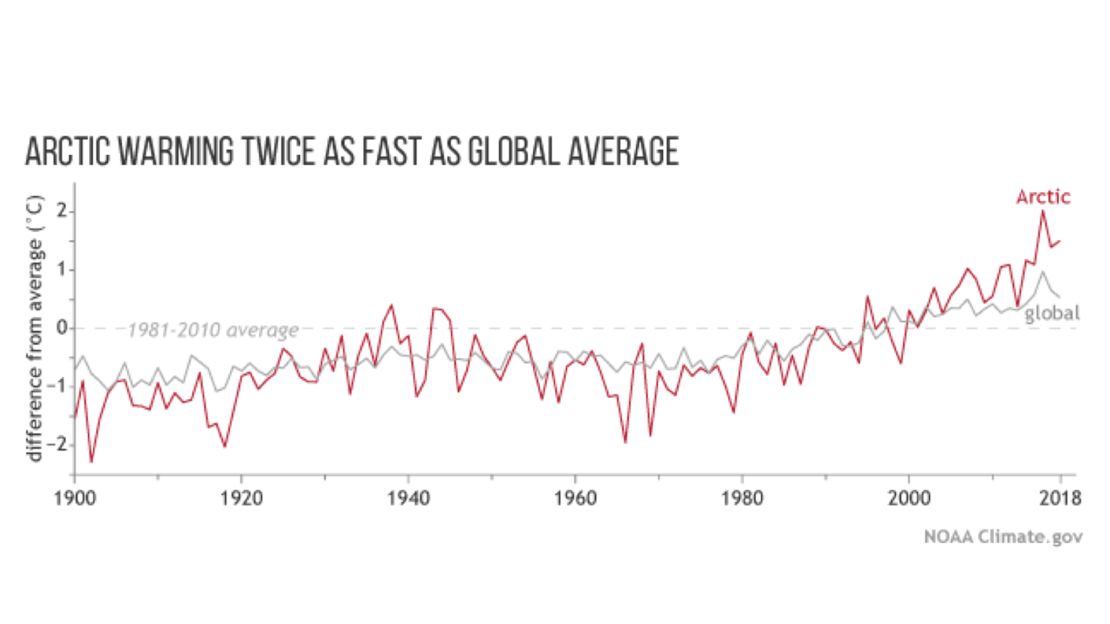
The rapid warming of the Arctic is known as “Arctic amplification,” which is due to multiple feedback loops that the report describes. Warmer temperatures lead to less ice and snow, which means less sunlight is reflected and more is absorbed by the darker oceans. This warms the ocean further, which in turn decreases the sea ice even more. The lack of sea ice and more ocean surface leads to additional cloudiness later in the fall season, which keeps the Arctic region warmer even later into the winter.
“What starts in the Arctic isn’t confined there,” Mote noted. “Changes in sea ice influence ocean currents and the jet stream in ways that can affect weather in lower latitudes, including the United States and Europe,” Mote said.
The report highlighted several of these events over the past year as an example of how Arctic warming can influence day-to-day weather.
The swarm of Nor’easters that plauged the eastern United States in early 2018 and the extreme cold outbreak during March in Europe, known as the “Beast from the East,” were specifically noted.
Sea ice continues to decline
As you would expect with the trend of record warm temperatures, sea ice has seen dramatic declines over the past 20 years as well, with 2018 continuing that trend.
According to the 2018 Arctic Report Card, this year featured the second-lowest winter sea-ice extent – the amount of the Arctic Ocean that is covered with sea ice – since the satellite record began in 1979. The summer minimum sea ice was the sixth-lowest over the same time period.
While winter sea ice extents have decreased at a much slower rate compared to the ice extent during the summer, there has been a significant change to the ice pack during the winter.
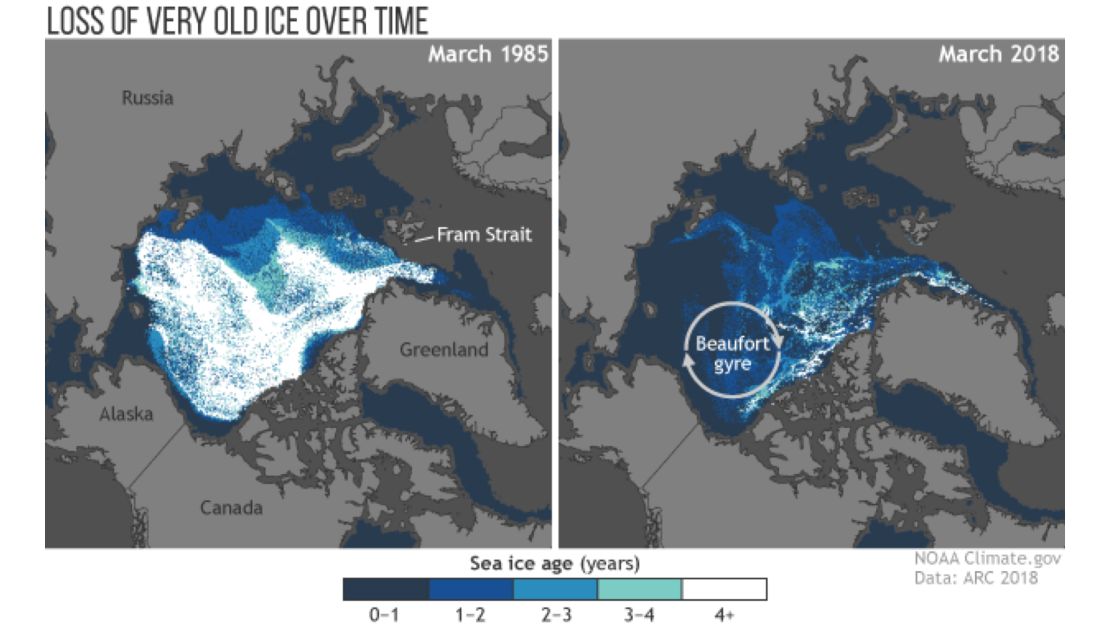
The ice is much younger than it used to be. According to the report, fewer than 1% of Arctic ice is considered “oldest ice,” meaning it is at least four years old and has survived multiple melt seasons. Older ice tends to be thicker and more resilient to changes in temperature.
Since scientists began measuring the age of the ice in the mid-1980s, multi-year ice in the Arctic has decreased in size from 2.54 million square kilometers (roughly the size of Mexico and all of Central America combined) to 0.13 million square kilometers (roughly the size of Nicaragua in Central America) – a 95% reduction in a little over 30 years.
“Sea ice cover has transformed from a strong, thick pack in the 1980s to a more fragile, younger, thinner, and more mobile pack in recent years,” the report states, where “the thinner, younger ice is more vulnerable to melting out in the summer and has contributed to the decreasing trend in the minimum ice extent.”
Red tides and reindeer
The warming of the Arctic climate and the decline of sea ice have led to some drastic changes in the biodiversity of the region.
The report’s authors found notable increases in harmful algal blooms, often known as red tides, which can affect human, wildlife and ecosystem health and lead to mass die-offs of fish and marine mammals, such as was observed in Florida during much of the summer this year.
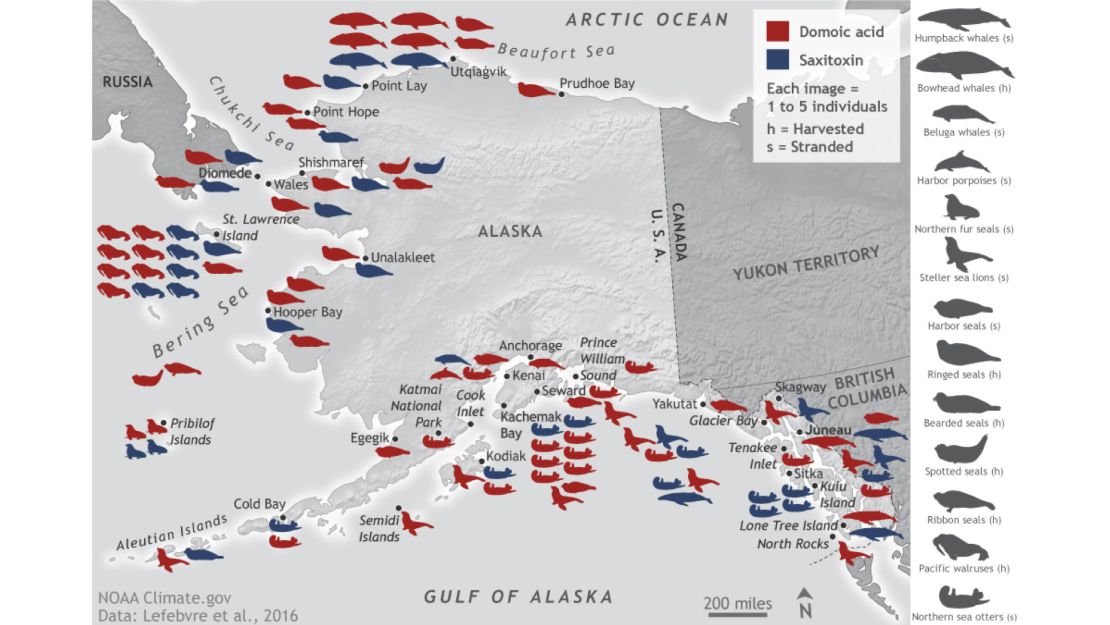
While normally confined to warmer climates, the toxin-producing phytoplankton have been shifting northward as ocean temperatures rise, posing a risk to the local populations and economies that depend heavily on fishing for food and tourism.
Other native wildlife species are feeling the heat, as well. Reindeer and caribou populations continued to decline in 2018, according to the report, with their total populations dropping by more than 50% over the past 20 years.
While climate change isn’t the only factor likely behind the decline in these herds, it is a driving force for a number of threats the animals face. Increased heat stress, food shortages, disease and parasites – climate change overarches each of these challenges, the report states.




